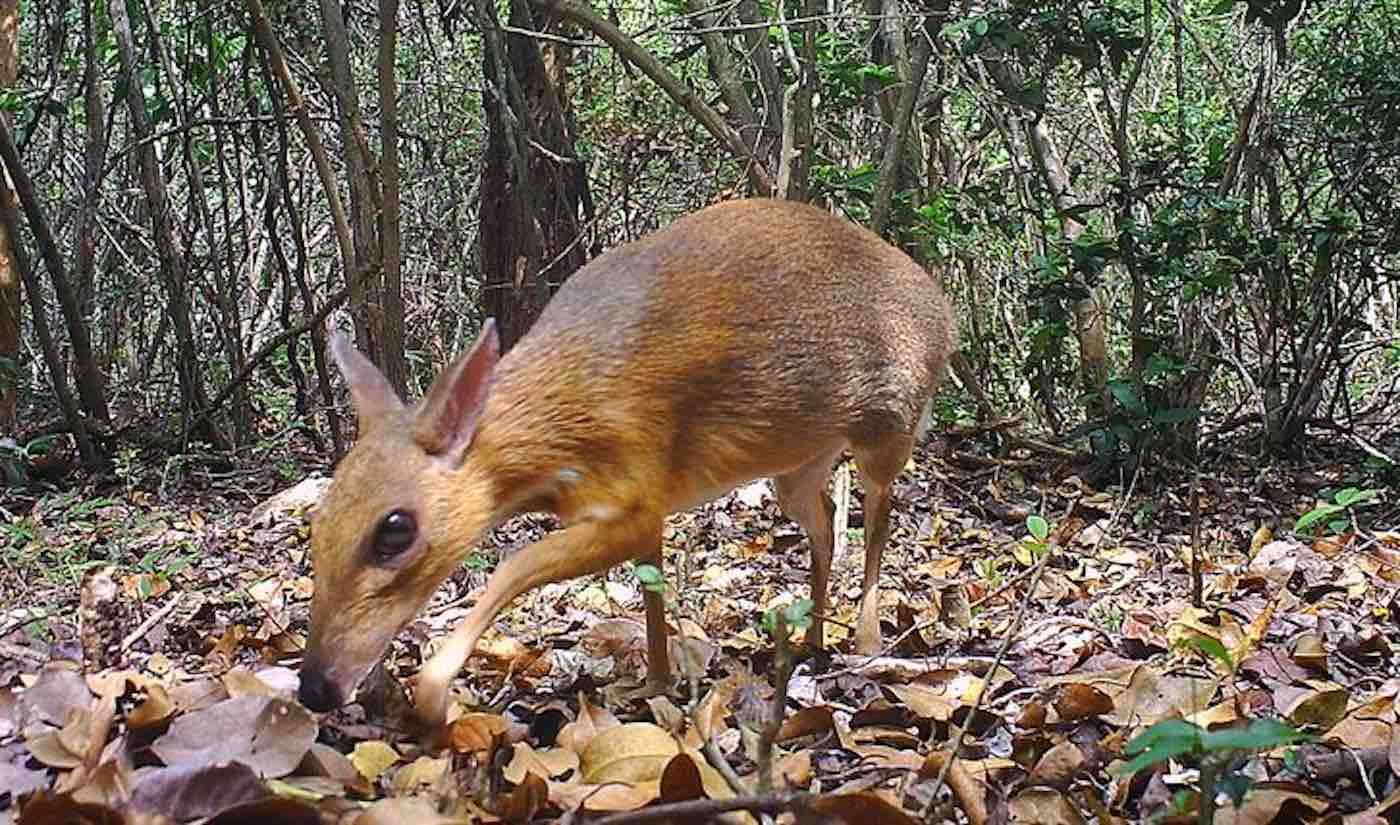Actor in Street Performance is Pretending to Be Injured When Stray Dog Wanders Up to Comfort Him
Numan Ertuğrul Uzunso pretended to be injured in an outdoor play in Turkey. Then a cute stray dog came up to comfort him.

After being lost to science for almost three decades, this tiny deer-like species has finally been rediscovered in the forests of Vietnam.
The "silver-backed chevrotain"-also known as the "Vietnamese mouse deer"-is about the size of a rabbit. Its last recorded sighting was in 1990, but after researchers managed to capture photos and video footage of the critter in the wild, it is now the first mammal to be rediscovered on the Global Wildlife Conservation's (GWC) top 25 most wanted lost species in the Search for Lost Species.
The GWC and their partners at the Southern Institute of Ecology and Leibniz Institute for Zoo and Wildlife Research made their rediscovery in southern Vietnam. Their findings, which were published this week in the scientific journal Nature Ecology and Evolution, is now spurring on efforts to protect the chevrotain and the other mysterious and extraordinary wildlife that share its home in Vietnam.
"We had no idea what to expect, so I was surprised and overjoyed when we checked the camera traps and saw photographs of a mouse deer with silver flanks," said An Nguyen, associate conservation scientist for GWC and expedition team leader. "For so long, this species has seemingly only existed as part of our imagination. Discovering that it is, indeed, still out there, is the first step in ensuring we don't lose it again, and we're moving quickly now to figure out how best to protect it."
The silver-backed chevrotain was described in 1910 from four individuals collected from southern Vietnam. A Russian expedition in 1990 in central Vietnam collected a fifth individual. Scientists know almost nothing about general ecology or conservation status of this species, making it one of the highest mammal conservation priorities in the Greater Annamite mountains, one of GWC's focal wildlands.
After several interviews with local villagers and government forest rangers who reported seeing a gray mouse deer-the color distinguishing the silver-backed chevrotain from the more common lesser mouse deer-the field team set three camera traps for five months in an area of southern Vietnam where locals indicated they may have seen the animal. This resulted in 275 photos of the species. The team then set up another 29 cameras in the same area, this time recording 1,881 photographs of the chevrotain over five months.
"The rediscovery of the silver-backed chevrotain provides a big hope for the conservation of biodiversity, especially threatened species, in Vietnam," said Hoang Minh Duc, head of the Southern Institute of Ecology's Department of Zoology. "This also encourages us, together with relevant and international partners, to devote time and effort to further investigate and conserve Vietnam's biodiversity heritage."
There are 10 known species of chevrotains in the world, primarily from Asia. Despite their common English names, chevrotains are neither mice nor deer, but the world's smallest small ungulates (hoofed mammals). They are shy and solitary, appear to walk on the tips of their hooves and have two tiny fangs. Chevrotains typically weigh less than 11 pounds (5 kilograms).
The silver-backed chevrotain is one of a number of fascinating species that live in the diverse tropical forests of Southeast Asia, where some species have been discovered only in the last few decades. This includes the antelope-like saola (the Asian "unicorn"), which was only discovered in 1992 and that no biologist has seen in the wild.
A team is now setting out to determine how large-and stable-this population of silver-backed chevrotains is; assess the wider distribution of the species; and explore the threats to its survival. As part of the first-ever comprehensive survey on the species, the team began camera trap surveys in October in two additional areas. They will use all of the information that they gather to develop a conservation action plan that strengthens enforcement and protection of the species across its range, building on the increased enforcement already put in place at the site of rediscovery.
"It is an amazing feat to go from complete lack of knowledge of the wildlife of the Greater Annamites 25 years ago to now having this question mark of the silver-backed chevrotain resolved," said Barney Long, GWC senior director of species conservation. "But the work is only beginning with the rediscovery and initial protection measures that have been put in place-now we need to identify not just a few individuals on camera traps, but one or two sites with sizable populations so that we can actually protect and restore the species."
Reprinted from Global Wildlife Conservation
(WATCH the camera trap footage below)
Hoof This Good News Story Over To Your Friends By Sharing It On Social Media…
Be the first to comment